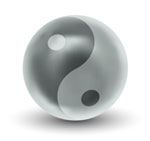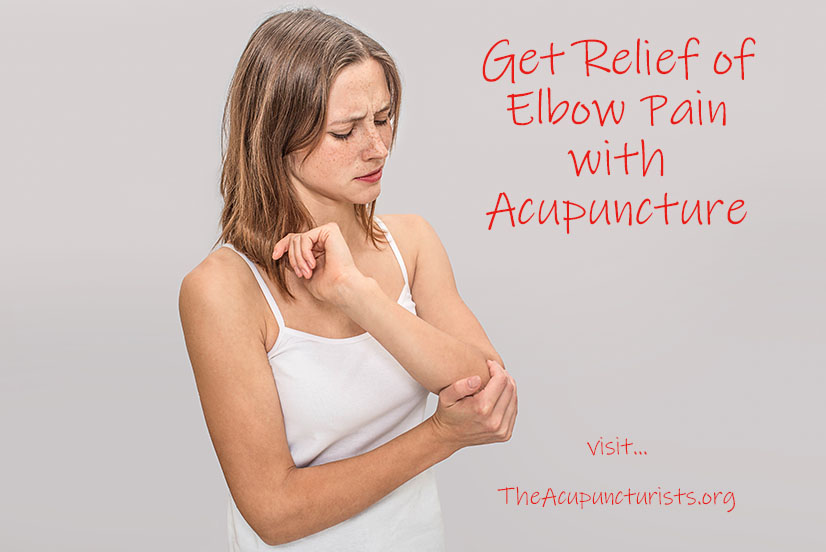By Robert Herbst AP, DOM – Magate, Florida – 4 to 7 in every 1000 people suffer from elbow pain every year. Persons aged between 40 and 50 years are the most susceptible to elbow pain (Verhaar, 1994). The incidence of this condition is worse in women. For instance, up to 10 percent of women aged between 42 and 46 years experience elbow pain (Vicenzino & Wright, 1996).
Many people seek Western medical treatments when they experience symptoms of elbow pain. However, many of these patients still experience the symptoms after this treatment and their conditions become chronic. Also, Western medical treatments are bound to cause negative side effects that may be injurious to the general wellbeing of the patient. It is upon this realization that more and more medical practitioners are turning to acupuncture and Chinese medicine in an effort to provide their patients with more effective and safer treatment for elbow pain and other types of chronic afflictions (Green et al, 2002).
Common types and symptoms of elbow pain
Tennis elbow – Tennis elbow is the commonest type of elbow pain. It is caused by the overuse of the elbow joint, just like the less common elbow pain type known as ‘Golfer’s elbow’. Even though these injuries are named after golfing and tennis sports, they can emanate from a wide range of physical activities including canoeing, swimming, weightlifting, rowing, wrestling and hockey among others. Tennis elbow and Golfer’s elbow can also result from undertaking repetitive tasks using tools like a hammer, screwdriver or even a computer as required by various occupations.
People suffering from tennis elbow can experience the following symptoms in any combination:
- Mild pain at the elbow joint that gets worse if not treated properly.
- Extreme pain on the outside of the elbow joint and that extends up to the wrist.
- Frailty when gripping things.
- Difficulty and pain when lifting items, opening lids, or using various tools.
- It becomes difficult to squeeze objects or even shake hands due to pain.
Elbow arthritis – Arthritis is a condition that leads to the inflammation of joints. There are numerous types of arthritis but the two main ones that affect the elbow are rheumatoid arthritis and osteoarthritis. Symptoms of elbow arthritis can appear suddenly or they can develop and exacerbate over time.
Common symptoms of elbow arthritis include swelling, stiffness and excruciating pain at the elbow joint. Arthritis may also reduce the range of motion of the elbow. The skin around the elbow joint becomes reddened. Symptoms of elbow arthritis are particularly worse in the morning.
Dislocated elbow – An elbow dislocation happens when one of the bones joining at the elbow joint slides out of the joint. Dislocated elbows ought to be treated fast and properly in order to prevent the damage from extending to ligaments, blood vessels and nerves.
Dislocations are usually visible. The elbow joint can be swollen, have a deformed or strange shape, bruised, reddened or discolored. The joint may also lose motion and the pain can be excruciating.
Tenosynovitis – Tenosynovitis is also referred to as tendon sheath inflammation and results from injured tendons. It is a common type of elbow pain among athletes, carpenters, office staffers and even musicians.
Symptoms of tenosynovitis include joint stiffness that restricts motion of the joint, pain, swelling, tenderness and reddened skin.
Common causes of elbow pain
The most common cause of elbow pain is overuse of the elbow joint. Many jobs and sports that people engage in require repetitive movements of hands. Occasionally, elbow pain can result from arthritis. In general terms however, the elbow joint is far much less susceptible to wear and tear damage that commonly affect other joints such as the shoulder joint. The following is an outline of the common causes of elbow pain:
- Bursitis: Bursitis causes excruciating pain to the patient and is caused by the inflammation of bursae (small sacs filled with fluid that serve to cushion bones, tendons as well as muscles around joints.
- Broken arm: A broken arm occurs when a bone of the arm is broken. The commonest cause of a broken arm is a fall , especially when one lands on outstretched hands.
- Dislocation: Elbow dislocation happens when either of the bones making up the joint are forced to slip out of the joint. This is commonly caused by falling on an outstretched hand particularly during sporting activities.
- Osteoarthritis affects millions of people and commonly leads to elbow pain. It results from the wearing down of the protective cartilage at the edges of bones.
- Sprains and strains
- Tendonitis refers to the inflammation of a tendon. It is a common cause of elbow pain and tenderness around the joint.
- Tennis elbow is the commonest cause of elbow pain. It is painful and happens when the elbow’s tendons are overused or overloaded particularly by wrist and arm movements.
Western medical treatments for elbow pain
According to Bisset et al (2006), Western medical treatments for elbow pain involve:
- Resting the affected elbow
- Physiotherapy
- Prescribed and over-the-counter pain relievers
- Cortisone and other steroid injections
- Surgical treatments.
Some studies that support acupuncture and Chinese medicine in treating elbow pain
Mayo Clinic practitioners tested the effectiveness of acupuncture in treating tennis elbow (Bauer et al, 2016). They administered acupuncture to 22 patients experiencing chronic tennis elbow. 80 percent of the patients were healed completely within a short course of treatment while another 10 percent of the patients experienced remarkable improvements. According to Mayo Clinic MD Peter Dorsher, they were “treating the worst of worst” elbow pain conditions which had “seriously disabled the patients before starting acupuncture treatment”. Additionally, the patients who took part in the study had failed to gain relief from conventional treatments such as wearing braces, injecting cortisone, and taking anti-inflammatory preparations.
Another study involving 90 participants at the Science and Experiment Center of Guangzhou Physical Education Institute showed that acupuncture, especially when combined with Traditional Chinese Medicine massage, led to significant positive clinical results (Ernst et al, 2010). The investigators concluded that the administration of acupuncture as well as massage is effective and safe in treating elbow pain.
Effectiveness and safety of acupuncture in treating elbow pain
Acupuncture has been shown to offer lasting relief to a large number of patients. As the studies above showed, 80 percent of people with chronic elbow pain can find relief from acupuncture.
The best part of acupuncture treatment is that it is totally risk-free. While the injection of cortisone and intake of anti-inflammatory medication comes with hideous side effects, acupuncture has few if any side effects. Also, most people who are treated for elbow pain through acupuncture report other benefits such as enjoying a good night’s sleep, lowered stress levels as well as improved general well being.
If you’re suffering with elbow pain let us help. The Acupuncturists serve the communities of Margate, Coconut Creek, Coral Springs, Tamarac, Parkland, Deerfield Beach, and West Boca. They take insurance and offer free consultations. Call today!
Web references
- http://www.webmd.com/pain-management/guide/elbow-pain
- http://www.mayoclinic.org/symptoms/elbow-pain/basics/definition/sym-20050874
- http://www.healthcmi.com/Acupuncture-Continuing-Education-News/1329-acupuncture-proven-to-heal-tennis-elbow
- http://www.acupuncture.org.uk/a-to-z-of-conditions/a-to-z-of-conditions/tennis-elbow.html
Academic References
- Bauer, B. A., Tilburt, J. C., Sood, A., Li, G. X., & Wang, S. H. (2016). Complementary and alternative medicine therapies for chronic pain. Chinese journal of integrative medicine, 22(6), 403-411.
- Bisset, L., Beller, E., Jull, G., Brooks, P., Darnell, R., &Vicenzino, B. (2006). Mobilisation with movement and exercise, corticosteroid injection, or wait and see for tennis elbow: randomised trial. Bmj, 333(7575), 939.
- Ernst, E., Lee, M. S., & Choi, T. Y. (2011). Acupuncture: does it alleviate pain and are there serious risks? A review of reviews. PAIN®, 152(4), 755-764.
- Green, S., Buchbinder, R., Barnsley, L., Hall, S., White, M., Smidt, N., &Assendelft, W. J. (2002). Acupuncture for lateral elbow pain. The Cochrane Library.
- Verhaar, J. A. N. (1994). Tennis elbow. International orthopaedics, 18(5), 263-267.
- Vicenzino, B., & Wright, A. (1996). Lateral epicondylalgia I: epidemiology, pathophysiology, aetiology and natural history. Physical Therapy Reviews, 1(1), 23-34.

